How to choose furniture for a hob and oven?
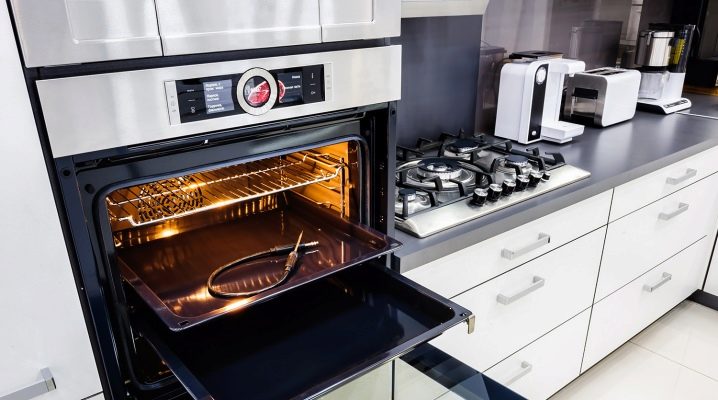
The modern kitchen is the most technologically advanced room in the house, therefore high demands are placed on the choice of furniture of the day. It should be beautiful, functional, safe and ergonomic.
Peculiarities
Built-in household appliances today are both a tribute to fashion and the implementation of new opportunities that the modern construction industry provides. The widely used frame technology for the construction of buildings allows you to create open spaces of a large area. There is an opportunity to implement original design projects, but there are certain nuances. In the interior, where the kitchen becomes part of the living room, and the living room is integrated with the kitchen, the unity of perception of the whole composition plays an important role.
The evolution of built-in appliances began with the revolutionary idea of dividing the oven and hob of a traditional hob into two separate appliances. Today the family of built-in appliances has been supplemented by microwave ovens, coffee makers, refrigerators, but in this article we will pay attention to the "hot shop".
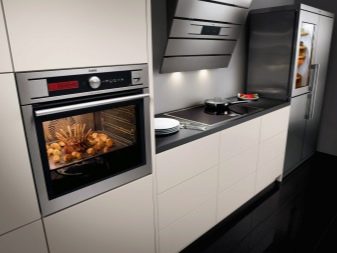
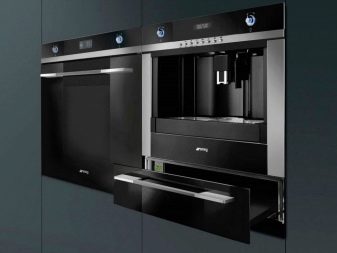
Ergonomics
The cabinet for the built-in oven can be either a low floor module or a high column-case, in which the equipment can be placed at any convenient height. This arrangement provides convenience, ergonomics and guaranteed protection from children (more precisely, children from technology). Many people today choose the second option, but it should be remembered that it is not suitable for small rooms.
If the size of the space allows, thanks to the high furniture, you can significantly enhance the functionality of the kitchen. The closed lower and upper tiers serve as a spacious storage system and visually relieve the facades without attracting attention. Blind doors are usually used for these modules. Combined with other cabinets, they form a monolithic wall. The oven compartment must be reinforced beforehand.
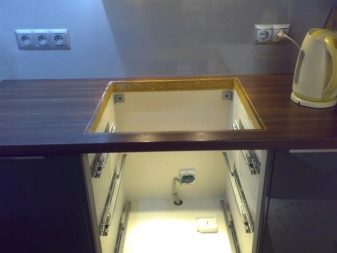
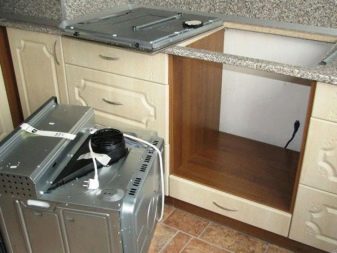
When choosing a cabinet design for built-in appliances, it is worth considering the individual characteristics of the owners. With high growth, it is extremely inconvenient to use a low floor cabinet, and a short hostess is uncomfortable and unsafe to handle an oven located too high in a pencil case.
Style
Projects with built-in appliances are often created for minimalist interiors and industrial-style spaces. However, there are no restrictions on the use of this technique in classic spaces, as well as in country or Provence style kitchens. Manufacturers of household appliances made sure that any person, regardless of their ideas about beauty and convenience, could realize their ideas. There are many antique styled models on the market. But nevertheless, it is worth recognizing that hi-tech rules the ball in the modern kitchen: this applies both to the prevailing style and to the manufacturability of the equipment.
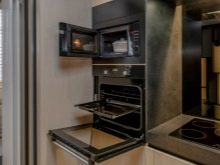
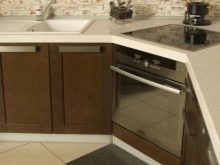
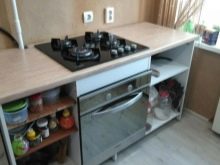
Security
In addition to design, when choosing a cabinet for built-in appliances, attention should be paid to the selection of materials. They must be practical, easy to clean, and most importantly safe. When the built-in oven is heated inside the cabinet, even with good thermal insulation, the temperature rises, and some materials can release toxic substances. Therefore, when assembling, it is imperative to take care of the ventilation device. If the manufacturer does not provide ventilation holes and grilles in the rear wall of the cabinet, it is better not to install it at all.
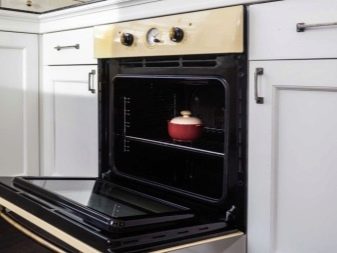
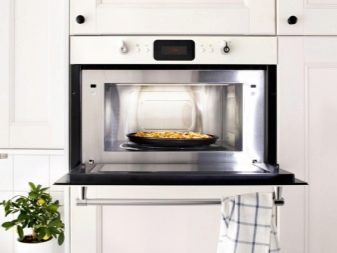
Materials for kitchen furniture
Most often, three types of materials are used for the production of kitchens.
Chipboard
It is popular with manufacturers of budget kitchens. It is made from wood shavings and sawdust, formaldehyde resins are used as a binder. When choosing furniture, you should pay attention to the decorative coating. There are two options for finishing chipboard: lamination and lamination. Both types of finishes imitate more noble materials, look almost the same, however, laminated boards are more durable.
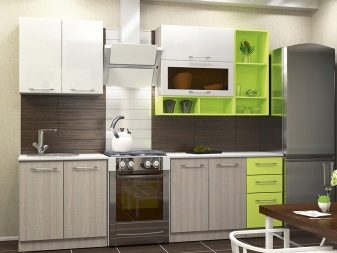
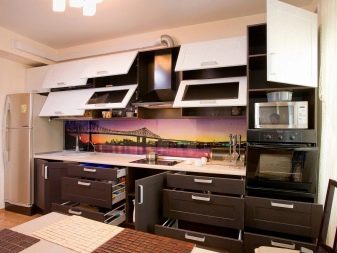
MDF
The abbreviation stands for "fine fraction". In production, small sawdust is used, the binder is paraffin or lignin. This technologically advanced and environmentally friendly material lends itself easily to complex processing. It has the advantages of natural wood, but is more affordable and durable.
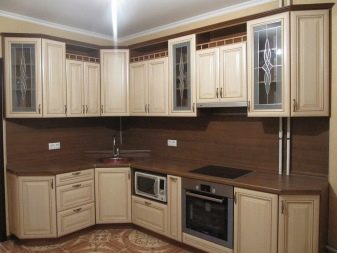
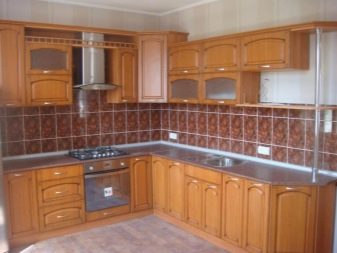
Natural wood
As a rule, solid wood is not used in its pure form, since it is prone to deformation under the influence of the external environment. Therefore, even expensive brands usually make only kitchen facades from wood.
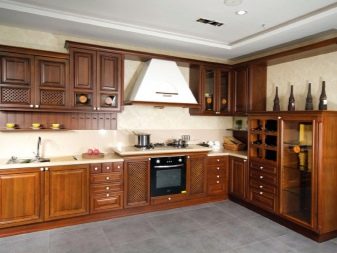
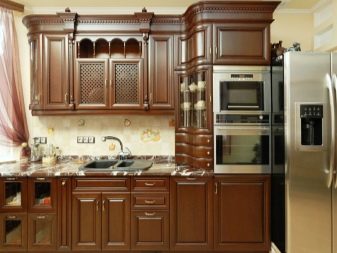
Exterior materials are more varied. Natural veneer, acrylic, surface lamination, colored varnish, painted MDF or MDF panels with PVC film, various types of plastic, tempered glass and stainless steel are widely used. In the classic versions, complex solid wood facades with panels and carvings are used. There are options for frame facades, glass or other material is inserted into a frame made of aluminum or MDF.
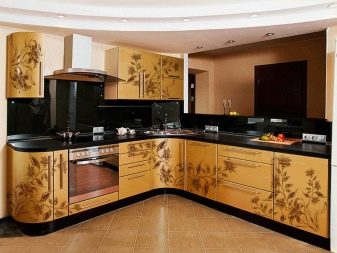
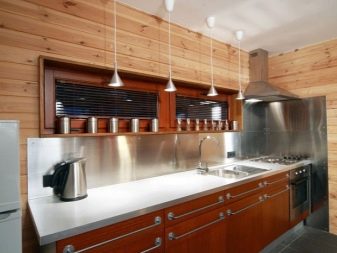
Five reasons to choose built-in appliances for your kitchen
Despite the fact that there is a large selection of free-standing cookers on the market, buyers are increasingly choosing built-in appliances. There can be many reasons, but here are the main ones:
- functionality;
- ergonomics;
- fashionable design;
- safety for children;
- the ability to competently equip non-standard dimensions of the kitchen space.
There are times when you need a narrow oven. For example, a bachelor or a young couple lives in a small apartment or studio. In other cases, an extra deep oven is needed to prepare meals for a large family. With such requests, it is difficult to find a multifunctional stove, but there are proposals for built-in appliances for every taste.
The dimensions of the cabinet for built-in appliances depend on the dimensions of the technical devices and the allowances for the free space between the equipment case and the furniture walls, which are necessary for air circulation. The standard dimensions of the oven are 60x60x56 cm.There are narrow models with a width of 45 cm.The depth of the floor unit is usually 50-65 cm, width - 50-120 cm.
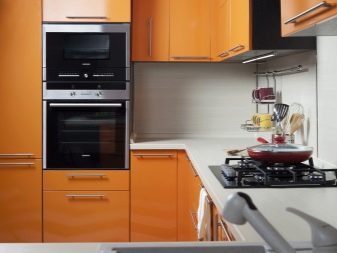
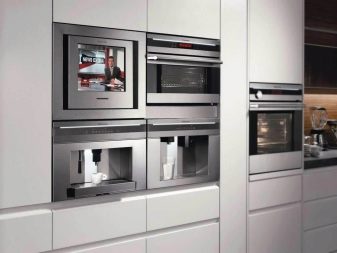
Types of devices
First of all, it is necessary to take into account what energy resources are connected to the kitchen, what type of equipment is chosen. There is a large selection of gas, electric and induction hobs on the market. High-quality gas equipment can cost more than electrical equipment, but in the process of operation "justice" prevails: gas as an energy carrier is cheaper than electricity.
The built-in hob and oven can be stand-alone or have a common control system. They are called that: dependent or independent.
Equipment with a common control system looks harmonious, as it is produced by one company in a common style. A hob cabinet integrated into a common module with a built-in oven must have a ventilation system. You should know that with such a configuration, if one unit breaks down, the entire technical base fails.
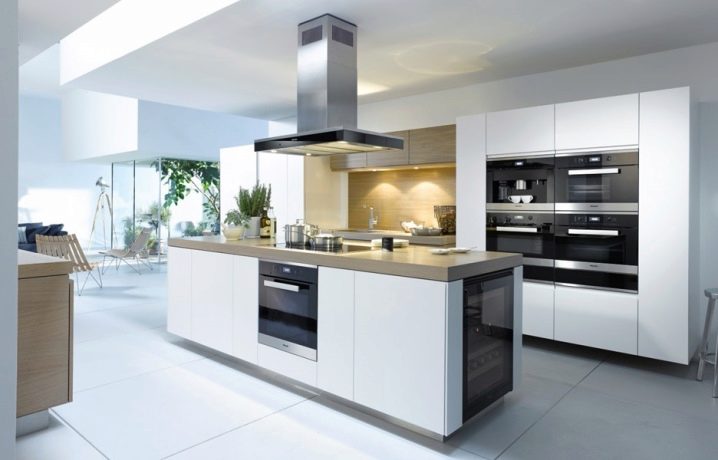
An independent setting allows you to choose a hob with a non-standard set and arrangement of burners.With dependent setting, only the standard version with four cooking zones is possible.
Equipment installation
When placing built-in appliances in the kitchen space, it is necessary to follow the "working triangle" rule. Even with a large kitchen area, the total distance between the oven, sink and refrigerator in the working area should not exceed 6 m: this is the requirement for ergonomics. A refrigerator and an oven, as well as an electric oven and a sink, must not be placed next to it. The gas oven must not be more than 120 cm from the gas distribution pipe: a hose that is too long is less reliable.
After installing and fixing the oven, prepare it for use by wiping it with a damp cloth and heating it at a high temperature for half an hour. Now everything is ready to go, all that remains is to wish you bon appetit.
For information on how to choose furniture for the hob and oven, see the next video.













The comment was sent successfully.